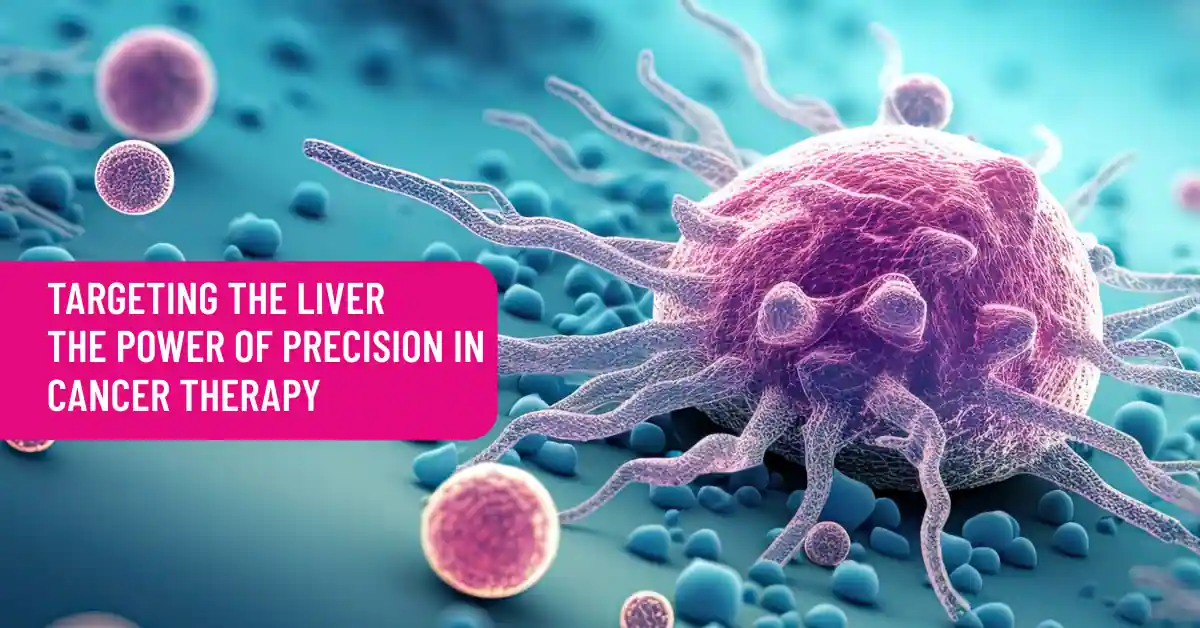Ahead of VIPOS 2025 – Exploring the Frontiers of Liver-Directed Oncology
When it comes to cancer care, precision is no longer just a buzzword, it’s a promise. A promise of less harm, more healing, and targeted treatments that go straight to the source of disease. As we step into the future of oncology, liver-directed therapies are emerging as a cornerstone of this movement, offering hope to patients with liver-dominant cancers or metastatic disease. At the forefront of these innovative strategies are Stereotactic Body Radiation Therapy (SBRT) and thermal ablation techniques like Radiofrequency Ablation (RFA) and Microwave Ablation (MWA).
With VIPOS 2025 just around the corner, the spotlight turns to these powerful techniques that are quietly reshaping how we treat liver tumors, both primary (like hepatocellular carcinoma) and secondary (metastases from colon, breast, or lung cancers). This blog breaks down these therapies, making sense for both healthcare professionals and anyone touched by cancer.
Why Liver-Directed Therapy?
The liver is a common battleground in oncology. It’s a site where many cancers metastasize, and it can be the origin of aggressive cancers in its own right. Historically, the mainstay treatment was surgery, liver resection, a complex procedure not always feasible due to tumor size, number, location, or patient fitness.
Liver-directed therapies have changed this equation. These approaches aim directly at tumors within the liver, sparing healthy tissue and reducing systemic side effects. They allow us to treat patients who are otherwise inoperable, elderly, frail, or with multiple small lesions, with curative or disease-controlling intent.
SBRT: Radiation, Reimagined
Stereotactic Body Radiation Therapy (SBRT) delivers highly focused, high-dose radiation beams to liver tumors with millimeter precision, often in just 3 to 5 sessions. Unlike traditional radiation therapy, which can take weeks and risks damaging surrounding tissue, SBRT maps the liver in real time, accounting for breathing motion, and delivers a concentrated punch to the tumor alone.
Why it matters:
• Non-invasive and well tolerated
• High local control rates (70-90% in some series)
• Suitable for patients who can’t undergo surgery
• Can be repeated or combined with systemic therapy
For medical professionals, SBRT is now being integrated into multi-disciplinary care, especially for oligometastatic liver disease. For patients, it offers the power of radiation without the ordeal of long hospital stays or recovery time.
RFA and MWA: Heat That Heals
Radiofrequency Ablation (RFA), and Microwave Ablation (MWA), are minimally invasive procedures that use heat to destroy liver tumors. Through image guidance (usually ultrasound or CT), a needle-like probe is inserted into the tumor. Energy is then delivered to “cook” the cancer cells, with minimal effect on healthy liver tissue.
RFA uses electric current to generate heat
MWA uses electromagnetic waves to produce a faster, higher temperature ablation.
These techniques are often done in a day-care setting and are particularly effective for small tumors (typically under 3 cm), either as primary treatment or in combination with systemic therapies.
Benefits:
• Minimally invasive
• Quick recovery
• Repeatable if new lesions appear
• Cost-effective
The Big Picture at VIPOS 2025
The VS International Precision Oncology Summit (VIPOS 2025) will bring together global leaders in cancer care to explore how therapies like SBRT, RFA, and MWA are transforming patient outcomes. With a special focus on the liver, discussions will span the latest data, patient selection, real-world challenges, and the future integration of imaging, AI, and navigation systems.
A much-anticipated session will also examine the evolving role of *liver-directed therapy within the broader continuum of precision oncology, where locoregional control meets systemic disease management.
Bridging the Gap Between Cure and Care
Whether you are an oncologist, radiation specialist, surgical expert, or simply someone seeking to understand modern cancer treatment options, liver-directed therapy represents the beautiful intersection of science, technology, and empathy. It reminds us that progress in oncology isn’t always about bigger breakthroughs, sometimes it’s about sharper focus.
As VIPOS 2025 approaches, it’s clear that the future of liver cancer therapy is not just about treating the liver, it’s about treating the right spot, with the right tool, for the right person.
Stay tuned. The liver has more stories to tell, and we’re listening.


